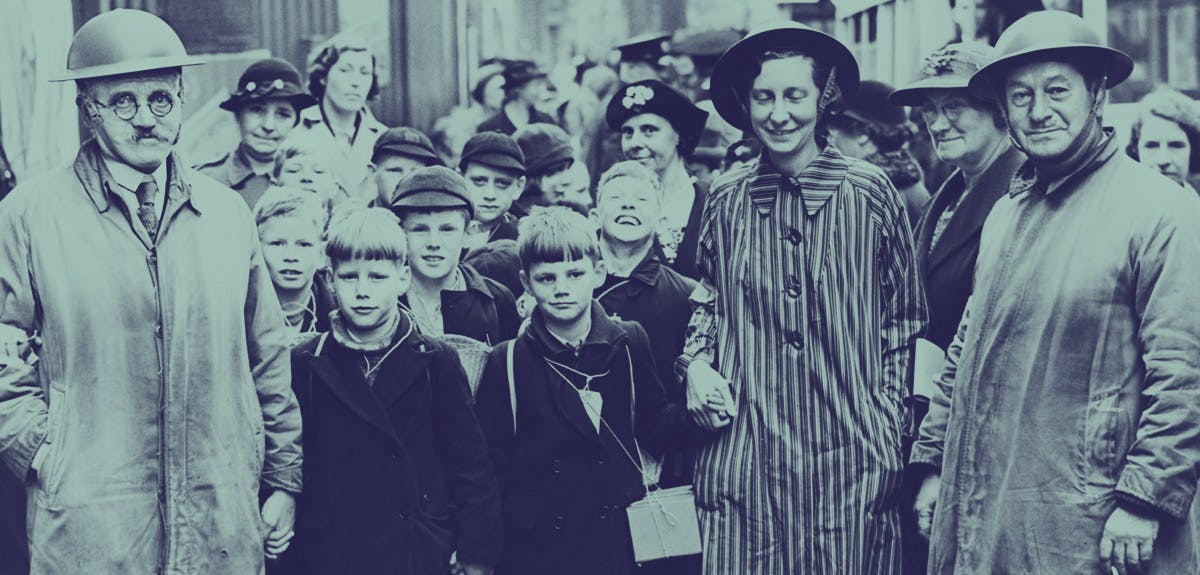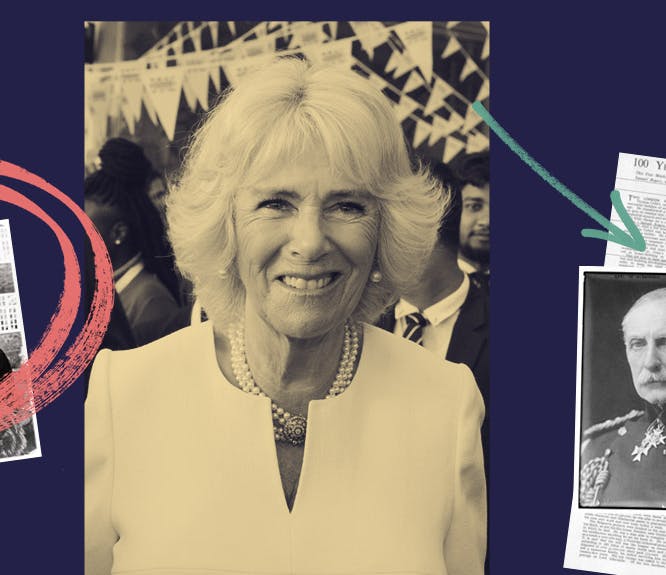How to find relatives that served on Britain's World War 2 Home Front
5-6 minute read
By The Findmypast Team | May 13, 2020

Family history expert, Stephen Rigden explains how our records can reveal your the role your family played in Britain's war effort.
Findmypast has a host of records that can help you trace family members who served Britain on World War 2's Home Front. The 1939 Register, specific Home Guard collections, historical newspapers from the time and a captivating photo collection all amount to a treasure trove of information on one of the most important times in history.
Here's a little more on what your Home Front family members might have been involved in and how to find out more with our amazing resources.
What was the Home Front in World War 2?
“Home Front” is the term used to describe the activities of the civilian population away from the military fronts (or theatres of war). More specifically, it means those activities which support the war effort. These could involve direct support (such as making munitions or military uniforms) or indirect support (such as women taking on typically masculine roles in the workplace to free up fighting-age men for the front line).

It also includes civil defence, dealing with the effects of war when visited upon the civilian population – especially enemy air raids and their consequences. Finally, there was a need to maintain law and order, for which purpose a Special Constabulary was recruited.
So, how can you find out if your relatives were involved in the Home Front?
1939 Register
The armed forces were not recorded in the 1939 Register. It was a record of the civilian population on 29 September 1939. Of course, as the Second World War went on, many of these civilians joined the war effort on the Home Front.
Some examples from World War 2 included in the 1939 Register are those civilians taking part in the ARP (Air Raid Precautions) and the Auxiliary Fire Service. They were involved in watching out for air raids, warning of their coming, and then firefighting, rescue, stretcher bearing, first aid, and demolition and decontamination after air raids had hit. They made up a whole other army of people mobilised on the Home Front.
This type of civilian wartime activity is shown in the “See Instructions” column (column 11) of the 1939 Register. You can find it on the right-hand page of each double-spread.
We have made it easy to search by putting together a drop-down list containing the most common of the roles. Simply choose the role that interests you from the list.

Some of the roles overlap. For example, a person could be described in the 1939 Register as St John’s Ambulance or as Ambulance Service. You can apply two (or more) filters at the same time, so you can select both St John’s Ambulance and Ambulance Service and search for them together.
The National Pigeon Service and its war pigeons
If you're interested in one of the many clever ways in which the British government tried to outwit the enemy, or if you’re just a pigeon fancier, you could search for National Pigeon Service.

You don't need to add any names or fill in other fields on the search page. Just search for the National Pigeon Service and it will show you all the men (and perhaps a few women?) across the country who were involved in pigeon messaging. Last time I looked, there were 337 of them.
32 pigeons received the Dickin Medal for gallantry during World War 2.

These war hero pigeons include:
Beach Comber
"“For bringing the first news to this country of the landing at Dieppe, under hazardous conditions in September 1942, while serving with the Canadian Army.”"
Kenley Lass
"“For being the first pigeon to be used with success for secret communications from an Agent in enemy-occupied France while serving with the NPS in October 1940.”"
Mary
"“For outstanding endurance on War Service in spite of wounds.”"
Paddy
"“For the best recorded time with a message from the Normandy Operations, while serving with the RAF in June 1944.”"
Winkie
"“For delivering a message under exceptionally difficult conditions and so contributing to the rescue of an Air Crew while serving with the RAF in February 1942.”"
You might be interested in finding out who was involved on the Home Front from your area. Select a civilian role from the list and then choose a district. You can then see all the Women’s Voluntary Service personnel, or the VADs (Voluntary Aid Detachment), for example, where you live.
The Home Guard
Another feature of the Home Front was the Home Guard. This was a volunteer militia, popularised by the BBC’s Dad’s Army sitcom, to defend Britain in the event of a Nazi invasion.
Most of the volunteers were men under or over military age (aged 42 or older). What we would now call key workers were exempt from military service, and they could also join the Home Guard. On Findmypast, you'll find the records of one county’s Home Guard battalions – those from County Durham.
Newspapers
The Home Guard was always in the news, so historical wartime newspapers are another good place to search for information about your local community and the Home Front. Narrow your search to the years 1940 to 1944. You can also select a county, for example, or use other filters to refine your search results.
Photos from the Home Front
The Findmypast Photo Collection contains thousands of amazing photos from Britain's World War 2 Home Front. You can filter the collection by subject and choose to just explore Home Front photos.

Many of the photos you'll uncover have never been published online before and offer a rare glimpse into what life was like on the Home Front.

ARP personnel and Air raid wardens help to search for survivors in an East Hull street after a German raid on the city, 9 May 1941. View full-size in the Findmypast Photo Collection.
What's more, any information that was written on the back of the original prints has been captured and made searchable. This makes it easy for you to search for a name, place or event.
Did your family serve on the Home Front?
We'd love to hear your family stories of heroism, sacrifice and bravery during Britain's war effort. Reach out to us on Facebook, Instagram or Twitter using #WhereWillYourPastTakeYou?
Related articles recommended for you

The remarkable true story of the man who saved 669 children from the Nazis
History Hub

Celebrating Canadian military stories this Findmypast Friday
What's New?

Aristocratic blood and surprising celebrity connections: Queen Camilla’s intriguing family history
Discoveries

